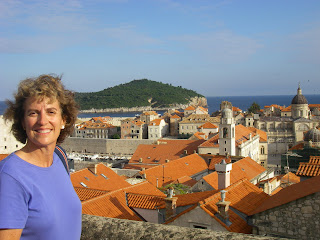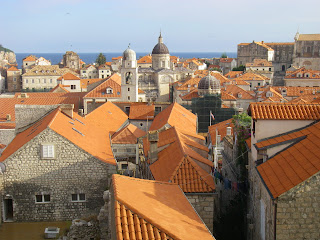Dubrovnik - Dalmatian and Italian Ragusa (official name until 1909), Latin Ragusium, also Rhausium, Rhaugia) is a historic city on the Adriatic Sea coast in the extreme south of Croatia, positioned at the terminal end of the Isthmus of Dubrovnik. It is one of the most prominent tourist destinations on the Adriatic, a seaport and the centre of Dubrovnik-Neretva county. [2] In the 2001 census, 88.39% of its citizens declared themselves as Croats. The prosperity of the city of Dubrovnik has always been based on maritime trade. In the Middle Ages, as the Republic of Ragusa, it became the only eastern Adriatic city-state to rival Venice. Supported by its wealth and skilled diplomacy, the city achieved a remarkable level of development, particularly during the 15th and 16th centuries. Ragusa was one of the centres of the development of primarily the Croatian language and literature, home to many notable poets, playwrights, painters, mathematicians, physicists and other scholars.
In 1991 Croatia and Slovenia, which at that time were republics within Socialist Federal Republic of Yugoslavia, declared their independence. Despite demilitarization of the old town in early 1970s in an attempt to prevent it from ever becoming a casualty of war, following Croatia's independence in 1991, Serbian-Montenegrin remains of Yugoslav People's Army (JNA) attacked the city. On October 1, 1991 Dubrovnik was attacked by JNA with a siege of Dubrovnik that lasted for seven months. In May 1992 Croatian Army liberated Dubrovnik and its surroundings, but danger of JNA sudden attacks lasted for another three years.
Following the end of the war, damage caused by shelling of the Old Town was repaired. Adhering to UNESCO guidelines, repairs were performed in the original style. As of 2005, most damage had been repaired.
 Emily says she is sick of busses, so I had to snap this of her.
Emily says she is sick of busses, so I had to snap this of her. Atop wall around old town of Dubrovnik.
Atop wall around old town of Dubrovnik.






1 comment:
It is a Split A/C unit, named after the Split where you are staying, probably.
I don't know where LG got its name but it produces a lot more than cell phones. We have a similar unit for air conditioning our computer room at our office. Half of the unit is small like your photo and the other half hangs on the wall in the computer closet. Split had nothing to do with our A/C unit though. It's a Fugitsu.
Hal - light on humor
Post a Comment